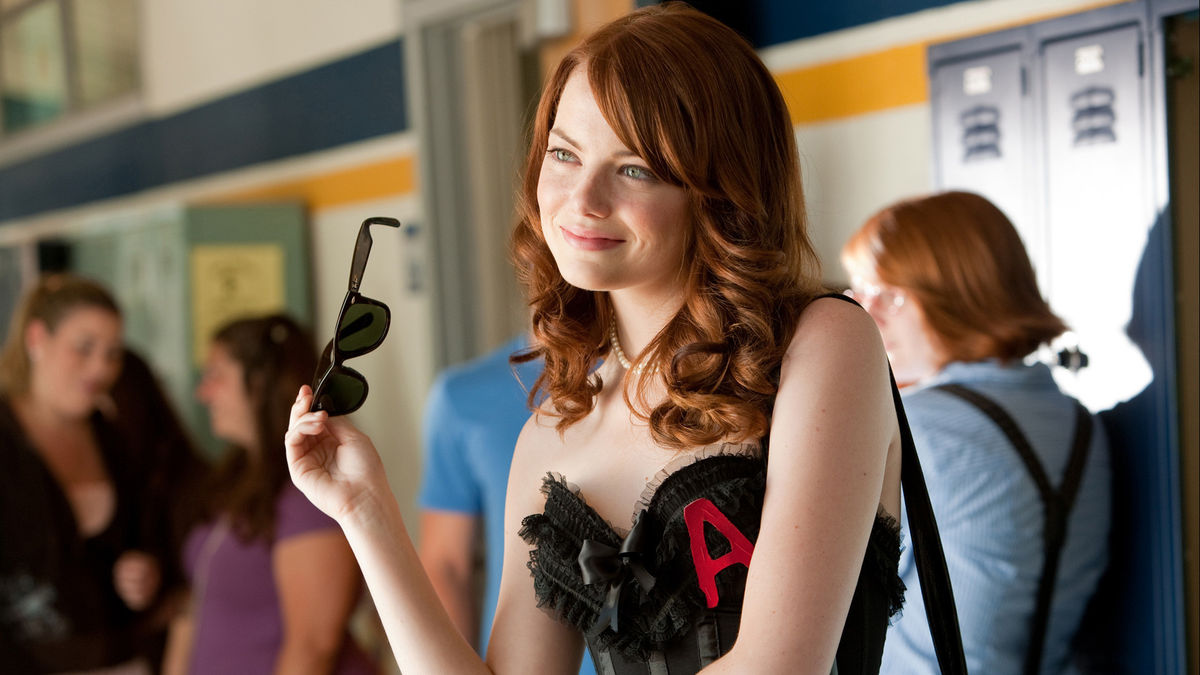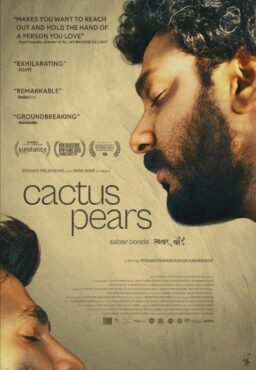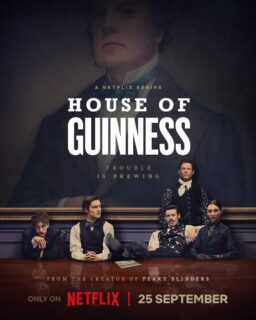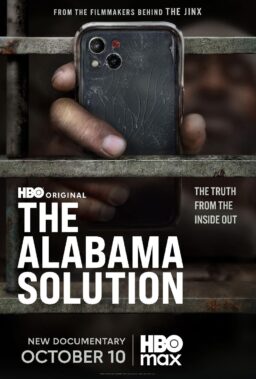“Let me just begin by saying that there are two sides to every story. This is my side, the right one.”
So begins Emma Stone’s direct-to-camera address as protagonist Olive Penderghast in Will Gluck’s 2010 film, “Easy A.” Now, a decade on from its well-received (if not exactly earth-shattering) release, it’s time to hear the other side of the right side. This is the high school movie that best captured what it was like for millennials to experience this period of their lives. Rather than reheating old narratives inherited from older cohorts, “Easy A” sensed the transformations in how a generation came of age and adapted its narrative to reflect this new reality.
Written by Bert V. Royal, “Easy A” has more to offer the current moment than how to navigate high school through the aperture of a webcam, too. “Easy A” ushered in the ‘10s as its own distinct era in the genre by telling a story that recognized the centrality of the digital experience to contemporary high school. While 2004’s “Mean Girls” and 2007’s “Superbad” remain more popular at large, neither feels cut from the cloth of their era. If their screenwriters simply replaced a few plot points involving cell phones with a landline or pay phone, each could easily function as a Reagan-era film.
Though “Easy A” openly name-checks the work of John Hughes and other ‘80s classics of the genre, the relationship to those classics is not as simple as paying loving homage or continuing their legacy. The film does not indulge these clichés. Rather, it critiques them and points out their hollowness in a modern context so the genre could evolve. “Easy A” exposed where narrative conventions and social ideologies from the Brat Pack period needed to graduate so the high school movie could better reflect and serve an emerging millennial cohort.

“Judy Blume should’ve prepared me for that.”
Conventions are still fluid in the high school and teen genre because its history is a fairly short one given that society did not widely recognize the concept of the “teen” until just after World War II. Early screen representations of the distinct period between childhood and adulthood were largely filtered through the fear and paranoia of a frightened older guard. What came to pass as a golden age for the genre in the 1980s still featured a healthy dose of moral panic, but the movies of this new era began to talk with teenagers, not just about them.
Where free love and anti-war ‘60s and ‘70s youth directed their energy outwards, Hollywood filmmakers of the ‘80s rerouted that attention back inwards. This is not an entirely unwelcome development; after all, high schoolers’ lives are full of drama and intrigue deserving of cinematic attention. And as teenagers began to make up more of the ticket-buying audience for movies, it’s only fair that they should take up more of the real estate on screen.
The vision of themselves that teenagers saw reflected to them on-screen hewed closely to the era’s reactionary values of assimilation and obedience. (And who better to sell this manufactured reality than Ronald Reagan, the president who was a former actor himself?) Characters in ‘80s teen movies served their best interest by embracing whatever label or position they held within their high school’s pecking order. Filmmakers also watered down teenage rebellion against older generations by repositioning authority figures such as parents and teachers as square forces that ultimately serve as sources of wisdom rather than oppression. The era’s youth found meaning and fulfillment either in their group identification or in a romantic partner of the opposite sex.
High school in the John Hughes era looked and felt nothing like the halls James Dean roamed in the ‘50s. Though these new films maintained a modern edge, they resembled the values and spirit of nostalgic fantasies like “Grease” or “Back to the Future,” two films that conjured comfort by resolving conflicts in favor of the unapologetically white, patriarchal social order of Eisenhower’s America. (“Easy A” ironically deploys “Grease” finale number “We Go Together” to accompany a scene in which Olive’s newfound friendship with her pious archnemesis evaporates within a single day.) In effect, the ‘80s collapsed collective youth spirit into conformity.
And, thanks to the corporate takeovers playing out behind the scenes at American movie studios, these movies sold to teenagers as it simultaneously spoke to them. Eighties teen movies peddled a fun time but a pernicious mythology that any adolescent could easily be condensed into an archetype. These stock characters quickly morphed into consumer profiles, compressing the wide range of teenage experience into one-size-fits-all group identities. By the time millennials became the predominant youth generation, high school had become as much a lifestyle brand as an educational institution.
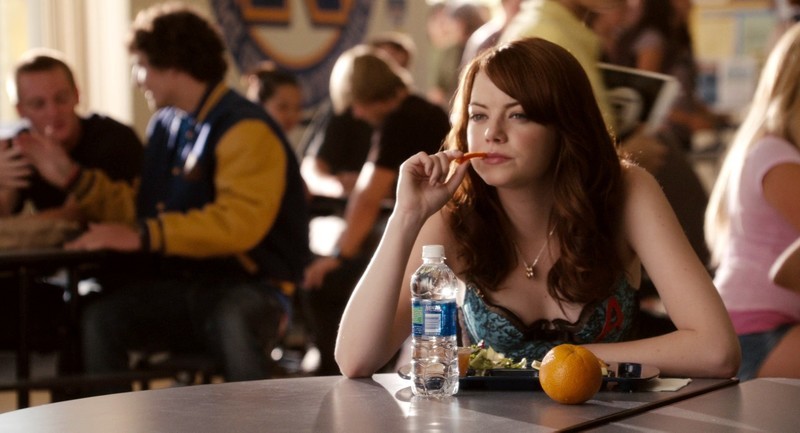
“Just once I want my life to be like an ’80s movie, preferably one with a really awesome musical number for no apparent reason. But no, no, John Hughes did not direct my life.”
Olive Penderghast first appears in “Easy A” as an anomaly among a crowded high school courtyard packed with clumped students: she’s by herself. “If Google Earth were a guy,” she observes in her trademark droll narration, “he couldn’t find me if I was dressed up as a 10-story building.” The statement rings true outside of a narrative context, too—Olive simply does not fit neatly into any kind of map of what movies presume a high school student looks like.
“Easy A” is distinctly less interested in class, economic or social, than its Reaganite forebearers. Olive stands alone in her unclassifiable profile. She is not quite a nerd, though she boasts a razor-sharp wit. She’s got a bit of a rebellious streak but is ultimately earnest and law-abiding. Her comfortable home in Ojai indicates she wants for little, though her lack of a car makes for one sign of many she cannot roll with the in-crowd. Hughes would likely be unable to place her within the familiar conflicts of his neatly defined social groups.
Nonetheless, Olive’s high school experience is still steeped in the context of such films that never made room for a person like her. Like many of her peers, she’s both captivated by high school movies and also captive to their lessons. Time and again in “Easy A,” be it in a Catholic confession booth or in response to whether she should be lovestruck over a guy, Olive defaults to answering that all her knowledge about a given topic derives from cultural representations of it. “Whatever happened to chivalry? Does it only exist in ‘80s movies?” she speculates, regretting that her millennial reality bears such little resemblance to the Gen X cinematic fantasies that became gospel for American youth.
Cinema has always been a bit of a distorted funhouse mirror, reflecting reality while also subtly shaping it. By 2010, it had gone far astray from representing the lived experience of millennial teens and continued to insist they play by a series of outdated principles. The movies of a bygone era, a crutch for understanding to Olive, had become a poor substitute for lived experience.
As if filtering her own high school journey through the movies was not enough, Olive also must contend with a new interactive cultural narrative in the form of social media. “Easy A” was among the first major movies in the genre to show what phones and social media represented to millennials: a new form of entertainment and storytelling, not just a mode of communication. Social media might be defined by the connections it allows you to have, but the platforms that emerged in the first decade of the 2000s also present the opportunity to spin your own narrative through selective information sharing.
What the market promises Olive for high school and the reality she observes every day diverge sharply. Olive’s nonexistent social status leads her to doubt her own value because she cannot locate it within the traditional cliques of high school or the shared story she’s watching play out on Facebook. Without something to identify her, Olive is left to experience high school like a spectating extra in the background of someone else’s movie. Since ‘80s teen characters tended to find fulfillment through group identification, Olive is unable to find a hero or heroine who can offer instructive lessons for her solitude.
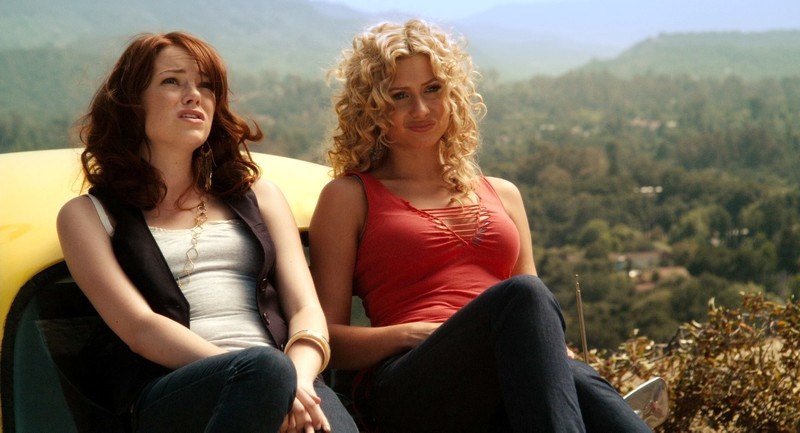
“That’s the beauty of being a girl in high-school: people hear you had sex once and BAM! You’re a bimbo.”
It’s no accident that the scandal that comes to redefine Olive’s public persona stems from her equivocation about weekend social plans. To shield the truth that she passed the time amusing herself with a singing greeting card, she tells her best friend Rhiannon (Aly Michalka) that she passed the time with her fictitious college boyfriend. Olive’s slippery avoidance leads others to fill in the gaps of the story with their cultural assumptions: the denial means she lost her virginity. The gossip spreads silently and rapidly thanks to the omnipresence of cell phones, and Olive does not have to hear the rumors directly to sense the change in how others perceive her.
In no time at all, Olive learns the journey from anonymity to infamy in high school is a short one. She begins perversely relishing in just how much a little scandal, real or imagined, can short-circuit the competitive attention economy in her favor. Her closeted classmate Brandon (Dan Byrd) takes advantage of this newfound appreciation of the limelight by enlisting her to stage a public hookup with him at a party, thus establishing his straight bona fides. Olive recognizes the sticky power of a lie, especially one pertaining to sexuality, and decides to participate in a convenient falsehood. But by leaning into her new publicly promiscuous perception, Olive assumes all of the stigma from the incident and further accelerates the decline in her standing. What she thought was a good deed only makes people think worse of her, furthering the divide between her genuine self and her public image.
In response, Olive defiantly casts aside all association of her identity with the truth and decides to go all in on the lie about her sexual expression. If she can’t locate herself as the John Hughes heroine, she’ll embrace the role as the Victorian villain of Nathaniel Hawthorne’s novel The Scarlet Letter through embroidering a red “A” on her skimpy clothing to reclaim the symbol from public shame. Olive finds willing co-authors to push this new image in an assortment of sheepish teen boys, who get to boast of sexual favors in exchange for providing her gift cards and other trinkets. After all, in a generation of storytellers crafting their own manipulated stories through social media, what’s the harm in consciously reveling in what everyone else does unknowingly? As Olive soon finds out, the consequences are high.
Unlike for ‘80s high school characters, embracing an identity does not grant someone control of that image in the Internet age. The online rumor mill makes it so people can talk behind your back while they’re staring you in the face, a tentative terror brought to agonizing reality in Stone’s vulnerable performance. The invisible toll that this new form of a classic teenage activity takes is no less devastating to Olive. She receives the burden of a label at her high school but gets none of the benefits of sharing that identifier as a bond with a group of her classmates, plunging her deeper into isolation.
The truly insidious nature of online gossip is not how quickly it can change the way others think about someone—it’s in the way it makes people change the way they think about themselves. With all due respect to Molly Ringwald, even her darkest ‘80s teen performances cannot match the raw self-loathing of Emma Stone in the bleakest moments of “Easy A.” She lays her character’s insecurities bare, reaching a devastating low when Olive must tearfully profess “I kinda hate me, too” as she laments the very real damage wreaked by her slutty alter-ego.

“The really amazing thing is, it is nobody’s goddamn business.
This desperation spurs Olive to even more drastic action in the film’s conclusion. Her disenchantment with pretending to be something she was not leads her to an important realization. Trying to live someone else’s idea of how your life should unfold, be it Hawthorne or Hughes, cannot provide contentment. The only way to free yourself from the tyranny of one cultural narrative is to write your own. So, rather than seek acceptance by reforming her image to become accepted, Olive opts to change gears and “reveal all” on a webcast. No, not physically, though she does lean into the double entendre to juice viewership for the big show. In the pits of her despair, Olive has a moment of clarity: the technological tools that helped drive her into lonely exile become the tools for her liberation.
It’s notable that reconciliation of the finale in “Easy A” takes place with Olive talking at her peers rather than with them. Her triumph comes not from finding a way to rejoin the community that spurned her but rather by summoning the strength to stand alone in her truth. Through an online webcast of unfiltered honesty, she recounts the misunderstandings that led to her pariah status. The film’s ending reveals that the entire story has been on her terms all along, and Olive has duped the very people who talked about her so disparagingly into listening to her set the record straight.
She closes out her candid broadcast by forcefully reclaiming her privacy. Though she embraces the ethos of her oversharing generation in providing access to her most intimate thoughts and feelings, Olive shuts the door on continuing to offer herself for the pleasure of and consumption by others. Her sexuality and her story belong to her, and she can choose when to share them—if at all.
After Olive logs off with a forceful denunciation of their intrusion into her life, the film cuts away to various characters reflecting on and revising their own roles in her story—only this time, it is they who are alone. A prototypical ‘80s movie might have condensed Olive’s confessional broadcast into a brief speech tacked onto the end of her show-stopping musical number (for no apparent reason, as she herself acknowledges). Instead, the entire film exists as a testament to her newfound tenacity and self-awareness.
As she rides off on a lawnmower with her love interest Todd (Penn Badgley) in a scene harkening back to multiple Brat Pack finales, Olive has not sold out her ideals or caved to another generation’s idea of how teenagers should find self-worth. Joyfully, she gets the John Hughes-style finale she openly craved for her life. But to get to that point, Olive must realize this ecstatic version of the high school experience is one that’s earned, not owed.

“That’s the one thing movies don’t tell you: how shitty it feels to be an outcast. Warranted or not.”
Whether “Easy A” caused a generational changing of the guard or simply coincides with the emergence of larger forces may be difficult to discern, but a trend in more recent progressive high school films may have this one to thank. The fingerprints of the film feel as if they are all over the past decade in the genre, be it the hyper-literate satire of 2012’s “21 Jump Street” or the openly self-effacing female protagonist in 2016’s “The Edge of Seventeen.” Olive’s defiance in the face of a sex-negative culture lingering from ‘80s conservative values helped pave the way for more recent films like 2018’s “Blockers” and 2019’s “Booksmart” to tell unabashedly sex-positive stories for female teenage protagonists.
If there’s one big complaint I could lodge about “Easy A” a decade later, it’s that the film didn’t arrive sooner. Upon its release in September 2010, I was a high school senior feeling isolated and misunderstood. Meanwhile, my Facebook news feed showed me in vivid pictorial detail that my peers were having the time of their life. Rather than let that loneliness lead me into introspection, I mostly let it drag me into misery and self-pity. High school began to feel like something I watched other people live through the photos they uploaded.
Olive’s wisdom is something I could have used as a high school sophomore when I endured a particularly confusing episode involving rumors and social media. Out of nowhere that spring, anonymous gossip accounts on Facebook by the names of “Thruda Grapevine” and “Tell-All Tattler” sprung up to post salacious, catty comments speculating about the secret lives of students. And though I generally flew under the radar like Olive, I suddenly found that there was a sizable contingent of people who had come to believe I was behind these pages. (For the record, I wasn’t.)
I wasn’t bothered all that much by the angry threat I got in the hallways from a classmate who claimed she’d cut my balls off in response to a joke one of the accounts made at the expense of her relationship. Rather, it was what people weren’t saying that cut so painfully. Was it really possible that, even though I tried to project dignity and decency, my classmates could believe I was the type of person who would do this kind of thing? Sensing a gap between the person I thought myself to be and the person that other people saw led me into a period of immense self-doubt and isolation.
But “Easy A” later reminded me that we rob ourselves of the joy of self-actualization when we allow other people to write our stories during this fertile period of personal growth. It’s ok to feel alone and misunderstood in high school, be it the one you attend or the ones you see in the media. It might not be an easy time, but only by locating yourself as the protagonist in your own story—not someone else’s—can you put yourself on the path to your own Hollywood ending.
